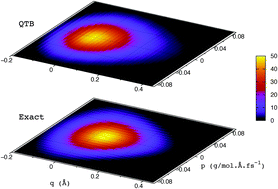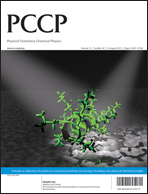Computing Wigner distributions and time correlation functions using the quantum thermal bath method: application to proton transferspectroscopy
Abstract
Langevin dynamics coupled to a quantum thermal bath (QTB) allows for the inclusion of vibrational quantum effects in molecular dynamics simulations at virtually no additional computer cost. We investigate here the ability of the QTB method to reproduce the quantum Wigner distribution of a variety of model potentials, designed to assess the performances and limits of the method. We further compute the infrared spectrum of a multidimensional model of

- This article is part of the themed collection: Spectroscopy and dynamics of medium-sized molecules and clusters

 Please wait while we load your content...
Please wait while we load your content...